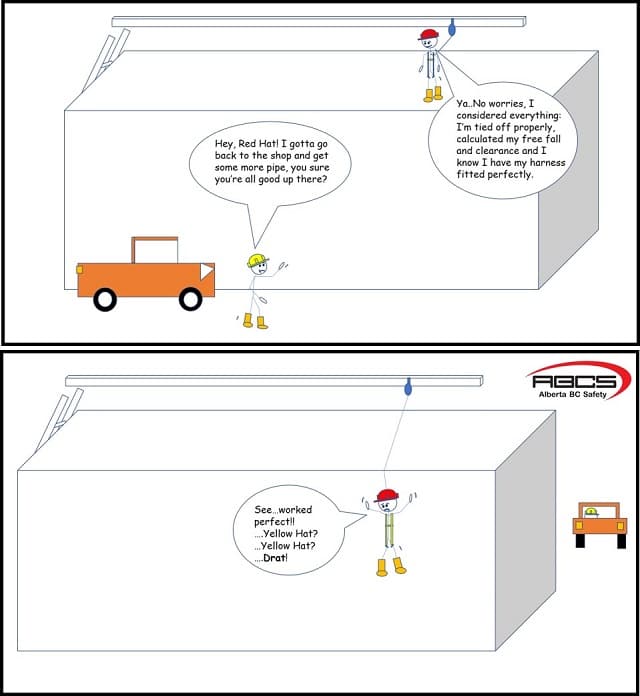Rescue Planning
This cartoon is a great reminder why rescue planning is so important. Some of us work at heights every day and can become complacent. We know our harness is on perfectly, we have calculated our free fall distance and minimum clearance, and tied off to a T. However, without doing frequent rescues and retrievals (thank goodness) we can forget some really important factors that could impede all of our hard work at staying safe. So after days, weeks, months and even years of safely working at heights, we may not do a detailed rescue plan, or one at all. Why is this important if we are working safely anyway? Because things happen, humans make mistakes. Having a co-worker dangling in their harness is not the time to make a rescue plan. According to Alberta’s Guide to the OH&S Code: “the suspended worker may lose consciousness in as few as five minutes”. OSHA notes in their Safety Bulletin on Suspension Trauma: “Research indicates that suspension in a fall arrest device can result in unconsciousness, followed by death, in less than 30 minutes”. So when someone falls, the rescue needs to start immediately. You cannot waste time figuring out what to do. The hanging worker could lose limbs or even die if they are left up there too long. No worker should be left alone while working at heights. Even if they have a radio or cell. How would they make that call if they are knocked out? Every rescue is different. Every time your job or task changes so does the rescue plan. These are factors you need to consider with every task at heights. A rescue plan isn’t something you do only when you’re working in unfamiliar territory, it’s something you and your partner or crew do every day. Don’t just copy it from the day before, point out new hazards, talk about the risks. Do your best to be safe but always plan for the worst.



